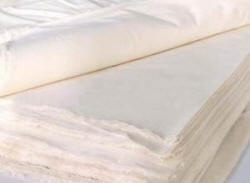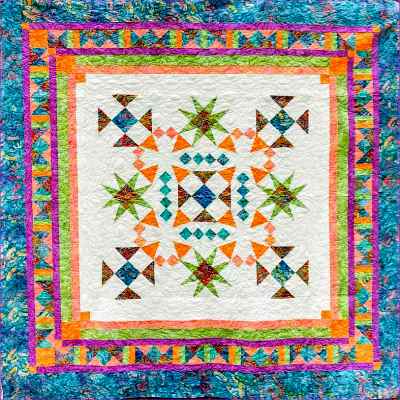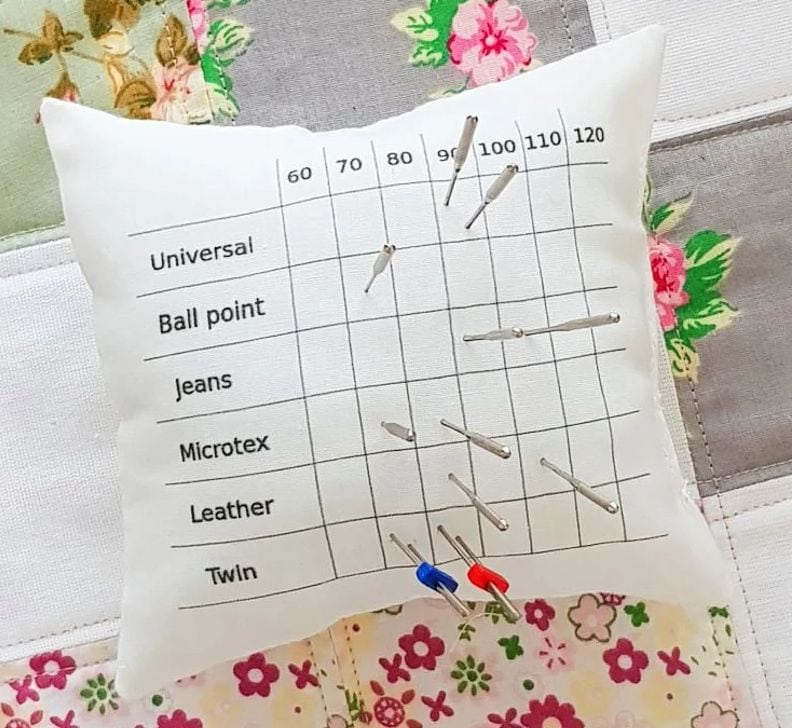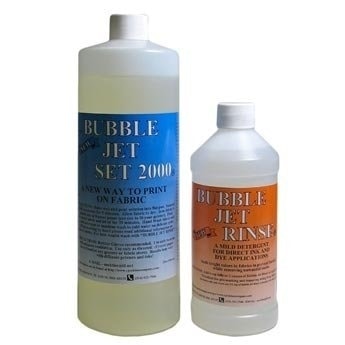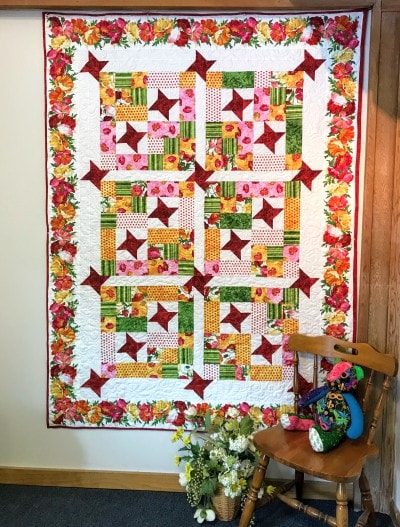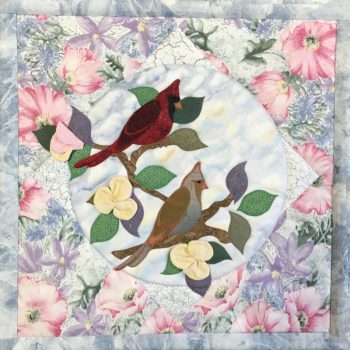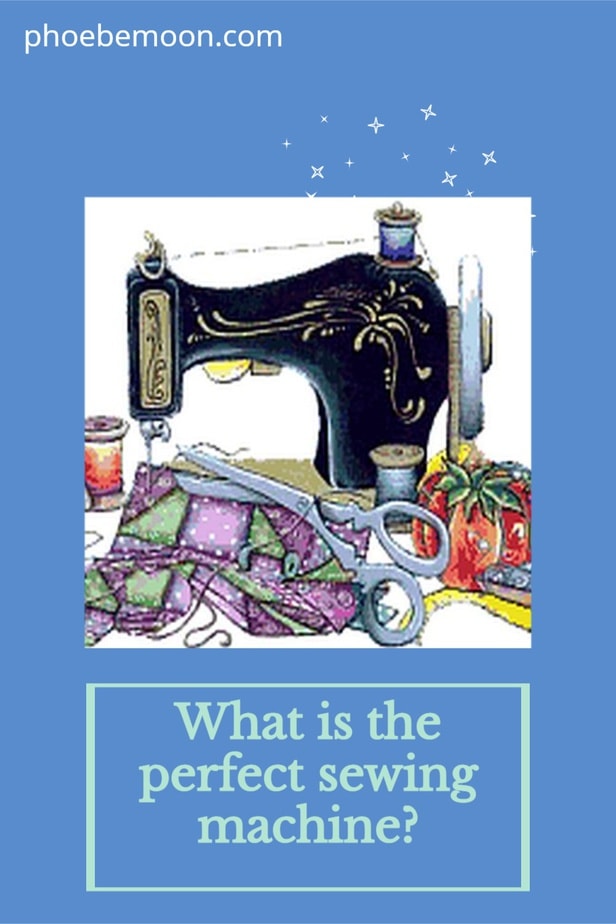*This post MAY contain affiliate links. That means that if you make a purchase after clicking on a link I may earn a small commission at no extra cost to you. I don’t ever recommend something that I don’t use myself. Not all links are affiliate links. For more information, see our Privacy Policy.
Choosing the Perfect Sewing Machine
Your new sewing machine will be your new best friend. Here is a list of questions that will help you choose the one that is just right for you.
First, take some time to think about how you will use your machine. Determine the type of sewing you will do (garments, quilting, heavy-duty, embroidery, lace, etc.) and make a list of the features that you need for each type. Read through our suggested features list and check off the ones that are important to you. Take this list with you as you visit sewing machine stores.
Ask others for advice, but remember YOU are the one who will be using this machine for a very long time. Buy the best you can afford. A top-of-the-line sewing machine can cost as much, or more, as a major appliance. If you really want something and get something else because of the cost you will regret it for the life of that machine. (10 to 20 years on a high-end model.)
Dealers often put their machines on sale in October and November, and while at quilt shows. ASK for the sale price even off-season! ASK for additional accessories to sweeten the deal. You may just get a bargain.
Second, choose your dealer carefully. Service after the sale can be very important to your satisfaction. You want one who will stand behind the machine with service, repairs, and classes. Study the warranty. Can the machine be serviced and repaired locally? Talk to other customers of this dealer. Were they happy with the way they were treated?
I can personally vouch for Sewing Machines Plus, as I purchased my last machine from them and found they had the best prices AND top-notch service and accessories. Having said that, I would still recommend that you purchase from a local dealer so you can take advantage of any classes they might offer on the machine.
Ask the tough questions: how long has the sewing machine company been in business under the current owner? Both Bernina and Babylock are family-owned. Pfaff was sold and resold and is now owned by the same company that owns Viking and Singer. Singer machines are no longer as reliable as they once were. If the same thing happens to Pfaff and Viking, will your dealer help you? Another good reason to buy local.
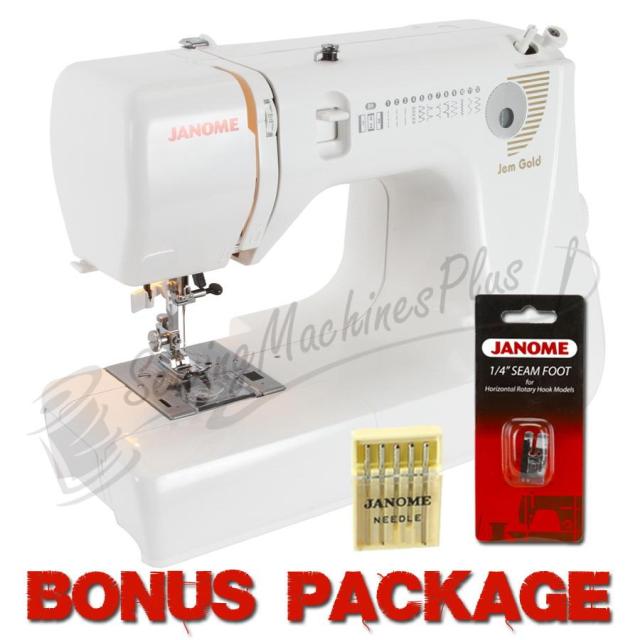
What is the repair history of this brand and model you are considering? Anecdotal evidence indicates that Brother and Babylock can be temperamental and have higher repair costs due to the difficulty in getting replacement parts. Janome owns its own manufacturing plants and actually manufactures machines for Bernina (the Bernette and the stand-alone embroidery unit), Elna, Sears the Pfaff Grand Quilter, and the Megaquilter. However, even though the machine may say Janome on it, regular Janome parts may not fit. This happens with a lot of machines, not just Janome.
Here are some features to consider in your new sewing machine
- Ease of use – how easy is it to thread? Is there an automatic thread cutter for both top and bobbin threads? Will it will “tie off” the threads at beginning and end of seams? Can you lower the feed dogs? How easy is it to do each of these tasks?
- How straight are the stitches? Be sure to test the zig-zag, too.
- Does it have an automatic needle threader?
- How does the thread feed? If you are machine quilting, you may want to use a large cone. Will the machine accept this or do you need an adapter?
- What is the procedure for refilling and replacing the bobbin? A drop in bobbin is usually the easiest to use. A clear bobbin cover can help you keep track of the amount of thread in your bobbin. Some machines have a light that tells you when the bobbin is low.
- How easy is it to clean? Clean machines last longer. Self lubricating machines will not need to be oiled but you should make the effort to vacuum or brush out the lint near the bobbin case frequently. You should always take your machine in for service every two years or 300 hours – some Berninas actually have a display screen that warns you of this. Keep your machine clean and dry by keeping it covered when not in use.
- Will it stop in the needle-down position? Some machines have an automatic pivot feature that will raise the foot a tiny bit with needle in fabric when you tap the power foot, allowing you to pivot the material. A second tap lowers the foot again. This means you can keep your hands on the fabric at all times.
- Some machines allow you to chose the needle position (needle up/needle down) when the machine stops.
- You may prefer a power foot that offers other options, such as the ability to do just half a stitch if you press the back of the foot with your heel.
- Does the machine have the ability to lift your presser foot with a knee lift lever so you don’t have to take your hands off your work? Some machines allow you to choose not to use the foot pedal at the touch of a button.
- Can you set the sewing machine to a constant speed? This is a big help when stippling.
- The walking foot – add in, or built in? Which works better for you? Many quilters prefer duel feed. Dual feed makes piecing more accurate by feeding both layers through evenly. Great for borders and quilting long rows.
- How deep is the arm space, or throat? If you do a lot of machine quilting, the larger this area is, the larger the quilt you can quilt. The Janome 6500 has a large open arm space.
- Bernina is the only company that offers a stitch regulator to keep the size of your stitches even while free motion quilting at varying speeds. However, several companies, including Pfaff and Viking, offer a built in walking foot, accufeed or other version of a stitch regulator.
- If you are piecing for quilts exclusively, you will want to look for a model that has a 1/4″ foot or the ability to move the needle position to the left or right to set your seam to 1/4″.
- The ability to adjust your stitch length and width on all your stitches. On the less expensive machines, if you push a button for the blind hem stitch you may not be able to change the size of that stitch, or with the blanket stitch. A very narrow blind stitch will help you with invisible machine applique.
- The method of blanket stitch appliqué. Do you want one that does one stitch forward, your sideways stitches and then forward again or forward, backward, forward and then the sideways stitches? When you are doing applique, you need to stop and pivot at exactly the right spot in the stitch sequence especially around curves and points. Make sure you are comfortable with the method your potential new machine uses.
- Do you ever need to make buttonholes? Every machine makes them differently, be sure you like the method your potential machine uses.
- Does the machine automatically adjust for heavier fabrics?
- You *will* need to adjust both the upper and the lower tension at some point, especially if you sew with decorative or delicate threads. How easy is this to do – and undo? (Don’t forget, you always need to have your pressure foot down when adjusting tension.)
- Will you be taking your machine to class? Computerized machines with LCD touch screens are sensitive to temperature and really shouldn’t be hauled around.
- Does this machine come with a travel case made just for it? If you plan on traveling with your machine, it needs to be kept clean and dry, and protected from bumps and bangs as much as possible. Be sure to practice getting the machine in and out of its case, carrying it, setting it up and putting it back in the case.
- Can you see and understand all the buttons and levers on the machine? Electronic and computerized machines can do everything for you – but are not convenient to use if you have to get out the manual every time you want to change something.
- What feet are included? A brand specific walking foot, free motion foot and quarter inch foot can be very expensive, but you do need them. This may be a negotiating factor when discussing the price of the machine with your dealer.
- Consider the price of add ins and attachments. Will you need a free motion foot or a single hole throat plate? Some machines include these items. Many machines will do all sorts of embroidery designs. However, the disks and/or software that contain these designs can be expensive. Could you do with fewer decorative stitches? What happens if the company goes out of business or stops supporting your model?
- Will you be using this machine with a quilting frame? Try it on the frame first! You may find that a comfortable home sewing machine becomes a very poor quilting machine with temperamental tension and inaccessible bobbins.
- If you need to use a screwdriver to change feet or attachments, is there room for you to maneuver?
- Make sure you get a good light that shines on the presser foot area. Some machines have lights over both the bed and the needle.
- If you do a lot of sewing, or sew for kids, choose a heavy duty model. Juki started out as a heavy duty machine quilting machine and now makes a reliable home machine. The Juki 35Z is an economical starter machine with a wider feed system (the tray in front) for easier sewing.
- The Janome 509 and the Janome 525 are also economical and reliable starter machines.
The Next Steps
Once you have decided on the features you want, visit several dealerships. When you are at the store, put the machine through its paces. Test every feature and every stitch. Don’t let the dealer rush you. Don’t feel pressured into making a decision because another customer wants to test the machine you’re using. Offer to test it together. Another customer could provide you with additional insight you wouldn’t get from a salesperson. Plan to spend two to four hours at the store. Go early in the day so you won’t feel rushed. Be assertive. Ask for a different salesperson if you aren’t getting the attention you deserve.
Take fabrics with you for testing. The dealer will have stiff, full-bodied swatches, and any machine will do well on those. A good fabric to test on is challis. Also, test on leather strips and several layers of denim. Take setups with you for whatever you do most … quilt blocks in various stages to see how well the machine goes over seams, fabric-batting-fabric sandwiches for quilting, fabric-interfacing-fabric for buttonholes, lengths of fabric pressed and ready to blind-stitch hem. Stitch over the cut edge to see how the machine handles it.
Keep a journal of what you liked and disliked about each machine. Don’t make a decision until you’ve tested all machines and all brands and don’t buy a machine the same day you test it. You will have your new sewing machine for many, many years. Make sure it’s the one you want.
You might also like to visit Sewing Machine Reviewer for more information on various sewing machines.
Comments on this article? We would love to hear them! Send them to me, and I will add them here. Please note that we cannot help you choose a new machine – only YOU can do that.
